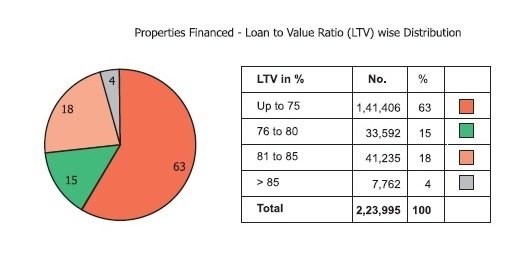In the recent concluded SAARC Summit (Nov. 2014) Indian Prime Minister Narendra Modi requested to all the participating nations to work towards ‘Change Cynicism to Optimism’. There is change in political environment of almost every South Asian countries.
Concluded 18th Summit of SAARC (South Asian Association for Religion Cooperation) at Nepal, Kathmandu on Nov, 26-27, 2014 suggests the change in the political scenario of South Asia. This organisation consists of eight supreme South Asian Nations namely Afghanistan, Bhutan, Bangladesh, India, The Maldives, Nepal, Pakistan and Sri Lanka established on December 7-8, 1985 during its first summit in Dhaka, Bangladesh had met after gap of 3 years as the 17th Summit was held three years ago in Addu, in the Maldives in November 2011. To understand the present scenarios of this change, first we need to have a view of the organisation.
SAARC: The Members
The eight members of South Asian association constitute 3% of the world’s area, and 21% of the global population, among which India constitutes 70% or more of SAARC area and population. Significant feature is that seven of the other members have common borders with India but not with each other, but they all are joined by a common thread of all shared culture and ethnicity. These nations have experienced long historical events including British colonialism and its imperialism. Considering the above, it is clear that India is the key nation in South Asia and any change must be directly related to the changes in the administration and foreign policy of India. Before we go to examine the issue, let’s have a view of the so far achievements of SAARC and the outcome of the recently concluded summit.
With the augmentation and succession of SAARC comes some limitation that this framework has evolved as a forum but it has no capacity to concoct instruments and techniques for mitigating on bilateral and multilateral political & security problems, because it mandates that decisions, at all level in SAARC, focuses on multilateral issue and only those issues are a part of inclusion in the agenda of the Summit. Unlike European Union, SAARC is not a body of equally levelled nations, hence the difficulty. Hence, India being the biggest brother of these nations, need to play the key role more impressively. Hence, we may examine the political conflict in South Asia simultaneously examining India’s foreign policy.
Problems in South Asia and the Root Cause in Terms of Indian Relationship with Neighbour Nations in South Asia.
Indo-Sri Lanka Policy- The last decade proved to be the worst policy framework towards Sri Lanka as the UPA government since 2004 was pathetically hamstrung by the sectarian, and pro LTTE parties, viz., DMK for its survival in parliament, resulting in tenuous relationship with the island, both, bilaterally and on the UN platform. As an outcome, China, which is not a part of South Asia ‘or’ a member of SAARC has gained a strategic advantage in the Island, and Hambantota port is the example of it, which is in the hand of China now, after India refused to assist the making on Sri Lankan request, due to DMK threat and all that happened is not a good sign for the health of South Asian nations because of increasing effectiveness of China in the region, which was also reflected during the just concluded Summit, where India managed hard to let China remain as the observer nation in the SAARC instead of a member nation.
Indo-Pak Issues-The two key players of South Asia, India and Pakistan seem more interested in competing in an arms race in the region than saving and improving the lives of more than half of their people. The intractable problem of Kashmir has given both the countries an excuse to engage in hoarding of arms & ammunition and deflect from the most pressing problems which they needed to address after gaining freedom from British imperialism. These again China playing key role to assist Pakistan against India for not letting India give a chance to stand firm on economic progress and let it engage with terrorism. The recent Summit of SAARC also showed the distance between the two neighbours.
Besides, it is also pertinent to mention here that even The Maldives had the gall to kick India in the chin and nimbly escaped without a riposte. They kicked out an Indian airport operator from capital Male and publicly dressed down Indian Ambassador without any fear or consequences. Recently in Nepal too, India found itself in a state of disgrace, while we have already discussed that in Sri Lanka, India became content to play a second fiddle to China.
The Change in India Governance and the View Ahead
Given the recent victory of NDA wonder the Prime Ministership of Mr. Narendra Modi and his very 1st call to invite all SAARC nations in the ministerial ceremony of his cabinet, has large and long impact on the political scenario. It is assumed that India may get back its impression day back der the governance of Late Indira Gandhi and Nehru when it had the larger impact on the neighbour nations and no one dared to have a hard look at India in South Asia. Although not relevant for South Asia only, yet it is pertinent to mention here that the awesome welcome of Mr. Modi in Japan, the US and Australia, and his recent stand at ATO on the food stockpiling issue to feed the poor to advocate for the developing nations, which is duly agreed to by the US and so on WTO, has given a clear message to the South Asian nations that time has changed, and it would be better to walk along with India for the betterment and development of the region. That is why the other members tried to break the ice between the two nations India and Pakistan during the just concluded Summit.
Major Obstacle in the South Asia
Going thoroughly with aforesaid points, it is understood that SAARC is the only group working in South asia, established three decades ago, which is now in critical condition due to the bitter relationship of the two because of few comprises on the foreign policy due to the pressure of regional parties, relationship among other nations are also getting bitter. It can’t be denied that progress of the region moves around and along with the progress of the region moves around and along with the progress of India and any discomfort with relationship with member’s nations will not be fruitful for the region. China emerged as the key issue for SAARC as it trying hard to influence the long trend of the group by giving aids to nations that had so far been dependent on Idea for all kinds of aids and assistance. Examples are there with Sri Lanka, Nepal and even Maldives, where China tried to play economics and in Pakistan there seems no option for growth oriented policies because for the last 67 years after independence it is yet to get the status of democratic country.
Need for Unity Among South Asian Nations
In an age where the degree of country’s technology and capital are determined by the level of integration within the region, peace and prosperity with the neighbours, availability of infrastructure and access to a pool of skilled labour with low cost transfers, regional cooperation becomes a positive sum, and a win-win game not withstanding other failures. The 18th Summit of SAARC had accorded for its regional electricity sharing through its multinational consensus, which will greatly relieved shortages in many a member county. If India is perceived to behave like a hegemon and Pakistan as obstructionist in India’s ambition to play a legitimate role in world affairs commensurate with its achievements and capabilities, SAARC may become a negotiating platform which may delve itself by functioning into smaller sub regional groupings. But instead of this, if the body works towards one particular nation and provides benefits & facilities to any of the nations, this will be destructive for the region (South Asia) as a whole, and if it happens, South Asian countries would never be able to overcome its social-economic dystopia and in future would be spearheaded by China and East Asia. Therefore, it is imperative that India-Pakistan get their bilateral act together and let the underdogs in the entire reap the benefits of regional cooperation. Otherwise any decision to dismantle or dilute the SAARC foes won’t be expedient and hence may prove costly and irreversible for the bipartisan.
You might like reading:

Analysis of GRUH Finance !
1. Introduction – A Curious Crowd What can be common between Dal Vadaa sellers, taxi drivers, dhobis, farmers, factory workers, small businessmen, roadside cobblers and tea vendors? Many are self-employed, earn in cash, have irregular incomes, rely on moneylenders for funding needs, and have almost indecipherable credit worthiness. Usually, banks shun them. But not GRUH Finance….. 2. Company Profile […]

Case Study: Pushing the Right Buttons- Lessons in Enterprise Creation & Promotion
Venture: Air Life Studio, Pune Promoters: Sunanda & Sudhir Mehta Air Life Studio is a gymnasium founded by a homemaker turned business woman, Sunanda Mehta. Dissatisfaction with a service can lead to a customer turning to another service provider (in most cases) or setting up one’s own service (which is not exactly common). Here is a look at how […]































